Harry Potter meets Downton Abbey: The world of Strange and Norrell
"One is never alone when one has a book,” actor Eddie Marsan declares. It’s a sentiment which anyone who’s read Susanna Clarke’s engrossing 2004 novel Jonathan Strange & Mr Norrell – now adapted as a seven-part serial for BBC One – might very well agree with. Indeed, if a book can adequately stand in for human company, then Clarke’s brick-thick fantasy – set in an alternate 19th century Britain where, after falling out of use for centuries, magic is making a return – can substitute for an entire social circle.
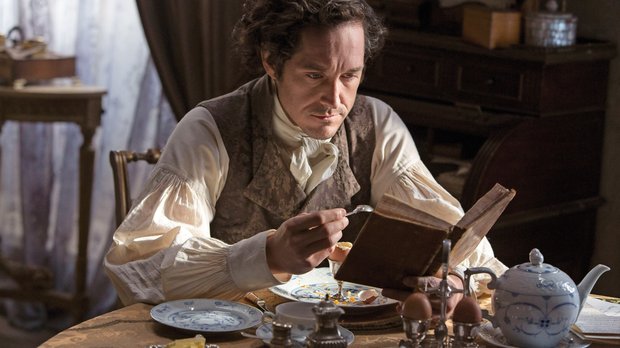
On this chilly December day in South Yorkshire, it’s a statement the bewigged Marsan is expressing in character as the titular Mr Norrell, one of the mismatched magicians whose difficult relationship is at the heart of the story. In the scene being filmed today, the fussy, methodical Norrell – who has yet to meet his future apprentice, the more instinctive, romantic Jonathan Strange (Bertie Carvel) – has been embraced by London high society, invited to dine at the home of cabinet minister Sir Walter Pole. Footmen are lined up behind the dozen dinner guests, gathered round a table laden with bowls of nuts and – the luxury! – pineapples. Paintings of naval vessels hanging on the walls serve as a reminder that, hundreds of miles away, war with Napoleon is raging.
Seated at the end of the table, Alice Englert’s Lady Pole is, slightly surreally, in casual 21st century clobber, presumably not required to actually appear in shot. Blocking the scene with the actors, director Toby Haynes – the man who locked the Eleventh Doctor in the Pandorica – ponders how best to convey a servant’s sudden panic at glimpsing something unnerving reflected in a shiny silver serving dish (Marc Warren’s sinister “gentleman with thistle-down hair”, the king of faerie land, is not present today…) Perhaps he should drop the soup slap-bang in Norrell’s lap? Eddie Marsan doesn’t flinch…

The shooting schedule matches the scale of Clarke’s thousand-page novel, with its dense barnacle-growths of scholarly footnotes. Filming will later move on to Montreal (standing in for the Iberian Peninsula, front line in the war with France) and Trogir in Croatia (doubling for Venice, as it did in Doctor Who’s “The Vampires Of Venice”), but today we’re at Wentworth House, near Rotherham, an 18th century country house of titanic proportions: over 300 rooms; 250,000 square feet of floor-space; three times the size of Buckingham Palace. Some of the existing rooms are being modified and dressed, with, for example, the wood-panelled chapel serving as the original debating chamber of the House of Commons, and the ballroom transformed into one in the faerie realm of Lost-Hope by the addition of a giant tree...
“Other times, they’re constructing sets within the palatial spaces – Jonathan Strange’s house has been built inside the stable block. We walk through a door and an ornate chamber which once played host to a visiting George III is serving as costume and make-up; bewigged footmen and ladies in expensive gowns stand about having adjustments made. Past and present, aristocracy and artistry have crashed together, and the effect is appropriately magical.

One of Toby Haynes’s fellow Doctor Who alumni, writer Peter Harness (“Kill The Moon”) is the man charged with the daunting task of adapting the novel for the screen. It might have been tougher, mind: he could have been onboard when New Line Pictures were developing a film version (their enthusiasm cooled after The Golden Compass failed to set the box office alight…). “I can’t imagine how you would do it as a movie,” says Harness. “It wouldn’t be the same story; it would be elements of this story. I think seven hours is the right length for it.”
Though Harness’s starting point was to edit down chunks of the novel and “kind of bash it around”, sculpting the story from there wasn’t as simple as simply chiselling chunks off. He also had to flesh things out. “In the book, characters are just left for a while,” Harness explains. “Well, you can’t just say, ‘That happened, and then we’ll pick them up in episode five or six.’ You’ve got to keep touching base with them. So there’s been a fair bit of invention in the evolving of the characters. That’s been the hardest – building up some characters and sculpting where they’re going.”
Get sneak previews, exclusive competitions and details of special events each month!
Making additions to a work that’s so highly-regarded must be a pretty nerve-wrecking business… “It has to be a very specific jigsaw piece that you’re putting in, and it needs to do a number of things. It needs to match the imagination of the original. That is a bit scary. I don’t always get it right first go, but it gradually evolves… You know what you need, and roughly what shape it has to be. Eventually, it becomes the right shape.”
Harness has strived to preserve the distinctive narrative voice of Susanna Clarke’s novel, with its dry wit and archaic phrasings, reminiscent of the likes of Jane Austen and Charles Dickens: “A lot of her dialogue is in the finished script.” As producer Nick Hirschkorn points out, one of the benefits of that voice is that it helps to foster a sense of realism. “By using Austen-esque language, what she’s doing is saying, ‘This is truly authentic.’ You feel like you’re reading that type of novel. Then when [Marc Warren’s] gentleman pops up, you go, ‘Where the hell did that come from?’ Therefore, it really works. I think whenever you’re dealing with fantasy, you’ve got to create a reality that is absolutely believable.”
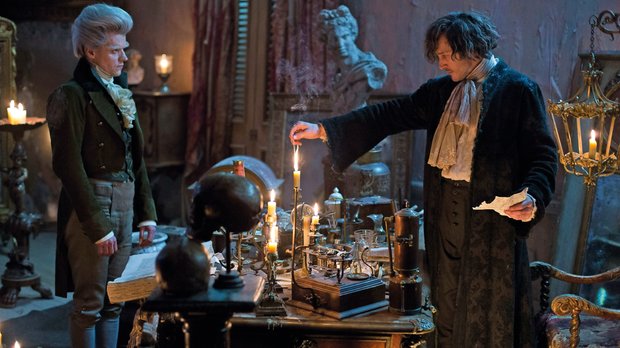
That’s a credo they’ve also followed when it comes to the production design. “I’m really into magical reality,” Hirschkorn explains. “I made a film beforehand called Skellig, with Sky. That was very gritty, very down-to-earth; then the magic really pops. I felt the same philosophy should be applied to this. [Production designer] David Roger’s way of dealing with period is incredibly authentic, but has such depth and richness that it also lends itself to a fantastical environment as well. We were very purist about what the time is: what type of furniture we’re using, what type of wig. It’s got to be absolutely spot on. We’ve paid a lot of attention to detail.”
And when it comes to the depiction of magic, they’ve been careful not to do anything which might undermine all of that hard work. The book features plenty of wondrous events: the statues in York Minster coming to life (filmed in the actual cathedral); a forest growing in the canals of Venice; an “Eternal Night” which follows a cursed man about… But the producers were keen to avoid “showing off” with effects setpieces that might distract from their primary purpose.
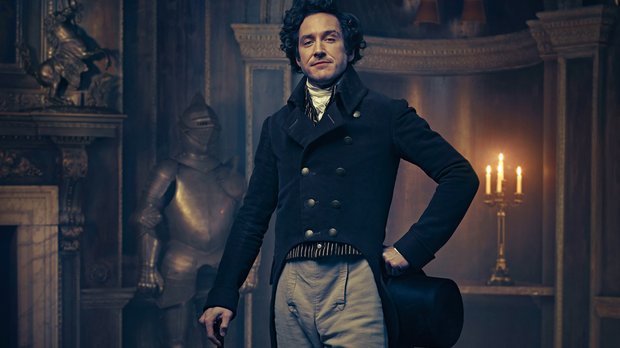
“We can expect to see some pretty large, spectacular moments,” Nick Hirschkorn says, “but we’re dealing with them in a very un-Harry Potter-esque kind of way. That’s all about ‘the effect’, and it does overwhelm the story a lot of the time. This is focused always on the human drama.” So, for example: episode two opens with a significant moment from the novel, where Norrell gets his foot in the door with the Establishment by using his magic to aid the war effort, creating illusory “rain ships” to flummox the French fleet.
“It’s very stormy, it’s very shades of grey. You can’t really see it perfectly,” Hirschkorn explains. “It’s brilliant, because it informs you immediately, the way that we’ve played it, that Norrell has achieved what he set out to achieve in episode one, which is to ingratiate himself with Parliament, and to help with the war – which he was told he couldn’t do. Immediately you open up on something like that and you know where your main character is because of that effects sequence. All of those sequences are feeding huge character developments.”
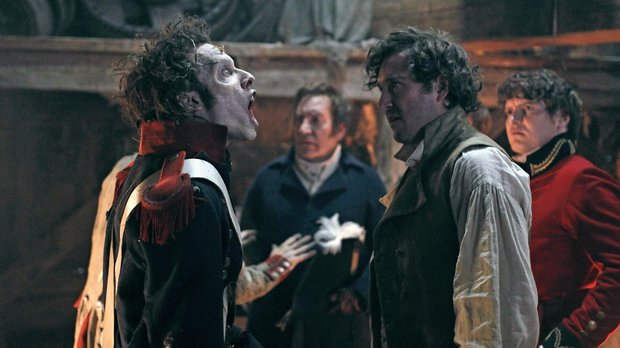
So: Clarke’s much-loved narrative has been given room to breathe – and a budget befitting its breadth. Changes necessary for it to work in another medium have been made, but the spirit of the novel has been preserved. And the effects are not shouting “Look at me!” but working in the service of characterisation. It sounds like all the possible pitfalls have been skilfully swerved. Proof of the pudding, of course, will come as the series airs. How will the book’s legions of fans react? Perhaps the author’s own response can provide us with a clue…
“She’s been incredibly supportive and positive and lovely,” executive producer Nick Marston assures us. “She really wants to know that the adapter is absolutely inhabiting the book. And the second thing she wants is that it should work on its own terms within its own medium.
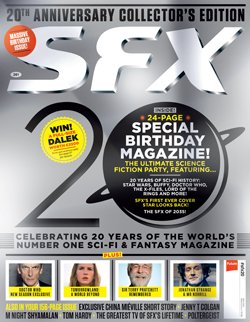
“When we first showed her the scripts it was an enormous moment – my heart was in my mouth… And she didn’t throw it across the room,” smiles Peter Harness.
Click here for more excellent SFX articles. Or maybe you want to take advantage of some great offers on magazine subscriptions? You can find them here.
Ian Berriman has been working for SFX – the world's leading sci-fi, fantasy and horror magazine – since March 2002. He's also a regular writer for Electronic Sound. Other publications he's contributed to include Total Film, When Saturday Comes, Retro Pop, Horrorville, and What DVD. A life-long Doctor Who fan, he's also a supporter of Hull City, and live-tweets along to BBC Four's Top Of The Pops repeats from his @TOTPFacts account.


